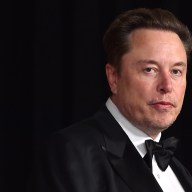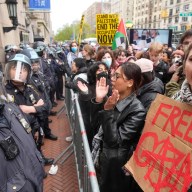 Gov. Andrew Cuomo proposed universal prekindergarten for New York in the budget speech. Credit: Office of the Governor
Gov. Andrew Cuomo proposed universal prekindergarten for New York in the budget speech. Credit: Office of the Governor
New York Gov. Andrew Cuomo laid out details on Tuesday of his plan for statewide universal prekindergarten as well as nearly $8 billion of property tax freezes and corporate tax cuts over the next five years.
The governor’s proposal for universal full-day pre-kindergarten would cost about $1.5 billion over the next five years. It would make New York the fourth state in the U.S. to implement such a program.
The plan proposed for New York City by Mayor Bill de Blasio would hike taxes on those making more than $500,000 to pay for pre-kindergarten.
De Blasio’s tax plan, which would have to be approved by state lawmakers, would begin providing funding for the program immediately. But Cuomo’s plan would take time to ramp up and would not provide a recurring revenue stream, said Billy Easton, executive director of the Alliance for Quality Education.
“Calling this a universal full-day pre-k program is far from accurate; after five years we will be lucky if it covers even 20 percent of the state’s 225,000 4-year-olds,” Easton said.
In presenting his $137 billion proposed budget for fiscal 2015 to lawmakers, Cuomo also kept most spending relatively flat. Limiting state spending would lead to a projected $2.2 billion surplus within three years to help pay for tax programs and the universal pre-kindergarten initiative.
Spending increases should be capped at about 2 percent and tied to personal income growth, Cuomo said.
“Staying within personal income means raising the state budget at the same rate the people of the state were earning,” Cuomo said during his budget address.
Last week, the Citizens Budget Commission, a nonpartisan watchdog group, said that limiting spending would lead to reductions in state services on a scale that would be “challenging.”
Spending on Medicaid and school aid, the two biggest items in the budget, must each increase a certain amount by law every year. Next year each is expected to grow by at least 4 percent, leaving the rest of the programs in the state to bear the brunt of cuts, the CBC said.
When school aid and Medicaid are stripped out, spending on most other programs would increase by only 0.2 percent annually in order for Cuomo to meet his target of 2 percent growth in spending overall.
Moody’s Investors Service warned on Tuesday that the rest of the state outside of New York City, particularly farther north, is showing lackluster economic growth.
Total fourth-quarter sales tax growth for counties in the rest of the state was only 1.4 percent from a year earlier. Moody’s rates New York Aa2 with a positive outlook.
Cuomo proposed a property tax freeze for homeowners, but tied it to the ability of local governments to save 1 percent each year for three years by sharing services and consolidating operations.
“We have too many levels of government, period,” Cuomo said. Erie County, for instance, has more than 1,000 local governmental units, including drainage, lighting, sewer, fire and park districts, as well as cities and towns. The county’s total property tax levy is $1.6 billion.
His tax relief proposals for homeowners, renters and families would total $5.7 billion over five years.
Cuomo’s proposed business tax incentives would cost $2 billion over five years altogether. One component of that plan would slice the top-tier corporate income tax rate to 6.5 percent from 7.1 percent. That move alone would cut projected state revenue by about $900 million over the next three years, budget director Robert Megna said.
Cuomo also said, as he did last year, that the state should ask voters in November to borrow $2 billion to improve technology and facilities in schools.
















